On the pelagic trip off the coast of New York this past Sunday one of the highlights of the trip was seeing the small and graceful Black-legged Kittiwakes swoop into the chum, grab food, dodge the larger gulls, and maneuver back out of the crowd, all without seeming to expend any real effort. Rissa tridactyla is a gorgeous little gull even in basic (non-breeding) plumage, which is how we saw them. Their wingtips, which are invariably described as looking as if they were “dipped in ink” are a great identification clue, as is the black “M” pattern on the upperwing of juvenile kittiwakes. Both adults and juveniles can be recognized at great range by their flight characteristics, which are almost universally described as buoyant and tern-like as in Pete Dunne’s description: “Flight is buoyant and nimble, with tight cornering and frequent banking that favors one side over the other (like terns).”
Black-legged Kittiwakes are one of two species in the genus Rissa, the other being the very similar Red-legged Kittiwake Rissa breverostris that is only found in the north Pacific. Both kittiwakes are named for the call of the Black-legged Kittiwake, which, according to David Sibley, is a “rhythmic, repeated kitti-weeik” though some refer to young kittiwakes by the archaic “tarrock.” The scientific name “tridactyla” comes from the fact that the Atlantic population of Black-legged Kittiwakes have only three toes, an oddity among gulls.
But enough facts: you want pictures! All the shots below are of adult Black-legged Kittiwakes. We did see some young birds but I failed to get any decent shots of them. You can see one unfortunate young kittiwake in this post about a previous pelagic trip.
Hope you enjoyed the kittiwakes and that someday you get as good a look at them…and this post has been submitted to Bird Photography Weekly #74. Go check it out!

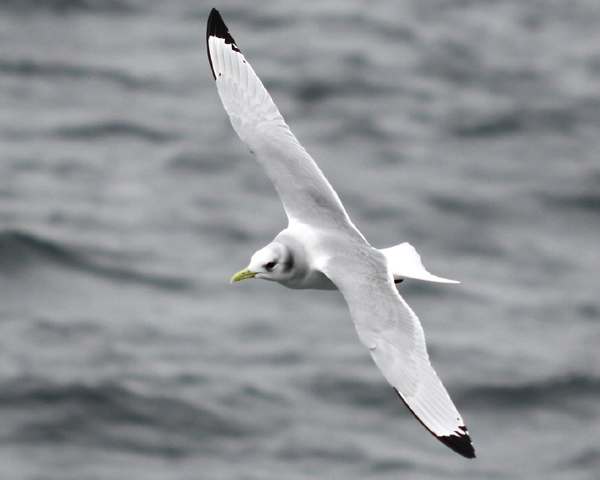
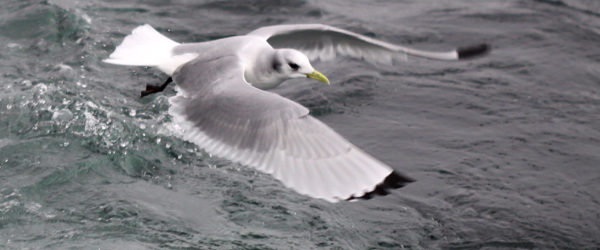
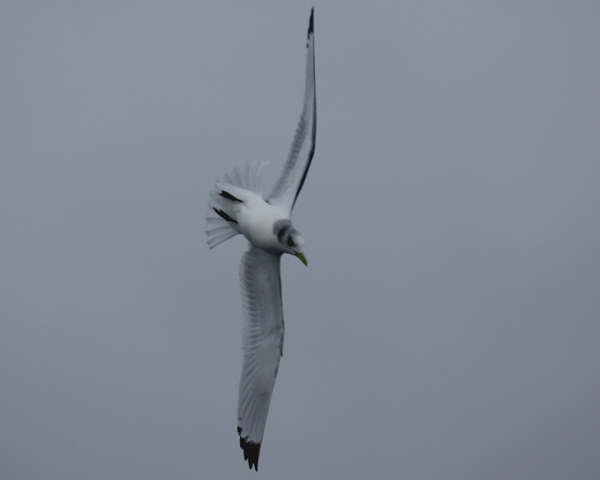
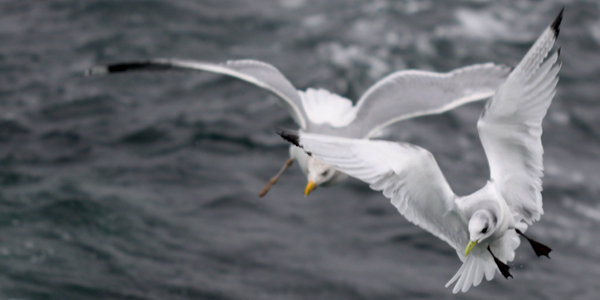
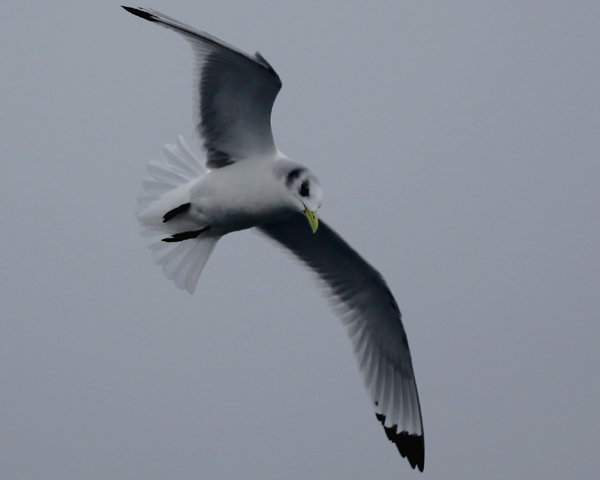
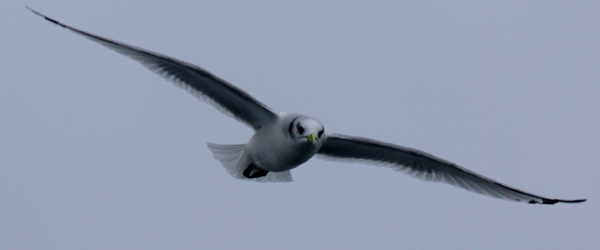
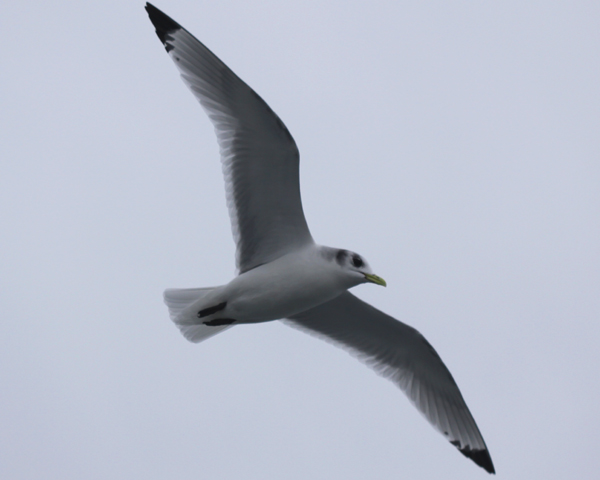
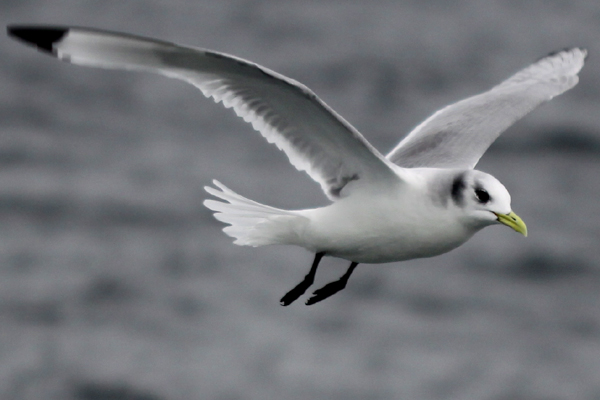
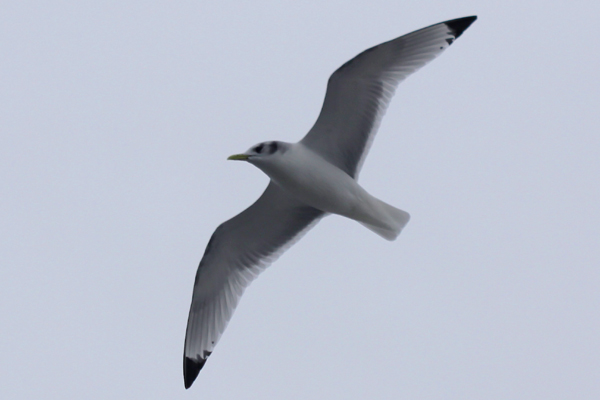
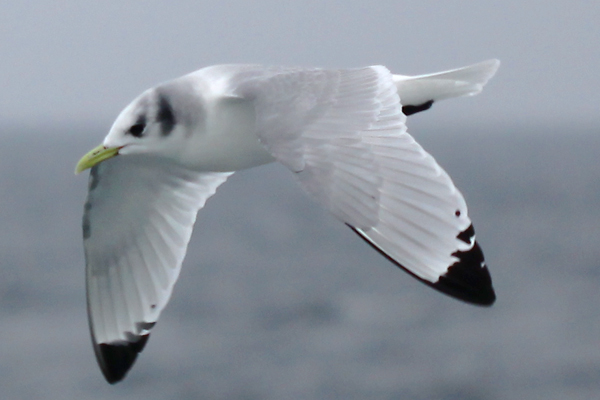










Interesting that your birds are further advanced than the Kittiwakes I photographed in Japan at almost the same time of the year – http://10000birds.com/black-legged-kittiwake-japan.htm
Did you see any still in moult?
I know conclusions can’t be drawn from such a tiny sample, but nevertheless it may indicate a difference in moult timings between the eastern nominate form and the western pollicaris? Anyone have any thoughts on that…
@Charlie: That is interesting, and, no, I did not notice any still in moult. And I had forgotten how much I liked those shots you got, especially the one with kittiwake tongue!
I love watching Black-legged Kittiwakes in flight at the Floe Edge. They are quite a tame bird as well, coming quite near and checking us out. Not quite as curious as Ivory Gulls, but I love their “delicate” flight.
The fourth shot down is just a great looking shot.
Clare – now you’re just showing off 🙂
Beautiful shots!
awesome flight shots! i love that one with two of ’em, great stuff! How cold was it on that trip? Yikes! We went of the coast of Northern CA this fall and I was freezing then, i dunno if i’d make it! 🙂
Great shots Corey! Gulls are so beautiful in that effortless flight.
Nice in-flight shots. What is that with a yellow leg in the 3rd pic?
@All: Thanks!
@Jill: It was actually pretty balmy, with temps never below the 30s (F).
@Nature Magnified: I’m going to go out on a limb here and assume you meant shot #4 and the bird with pink legs and say it is Herring Gull… 🙂
Excellent photos Corey! I agree, 4th one down is awesome!
Thanks for posting these excellent photos of the Kittiwake, Corey! I just realized I have a photo of this species and didn’t even know!